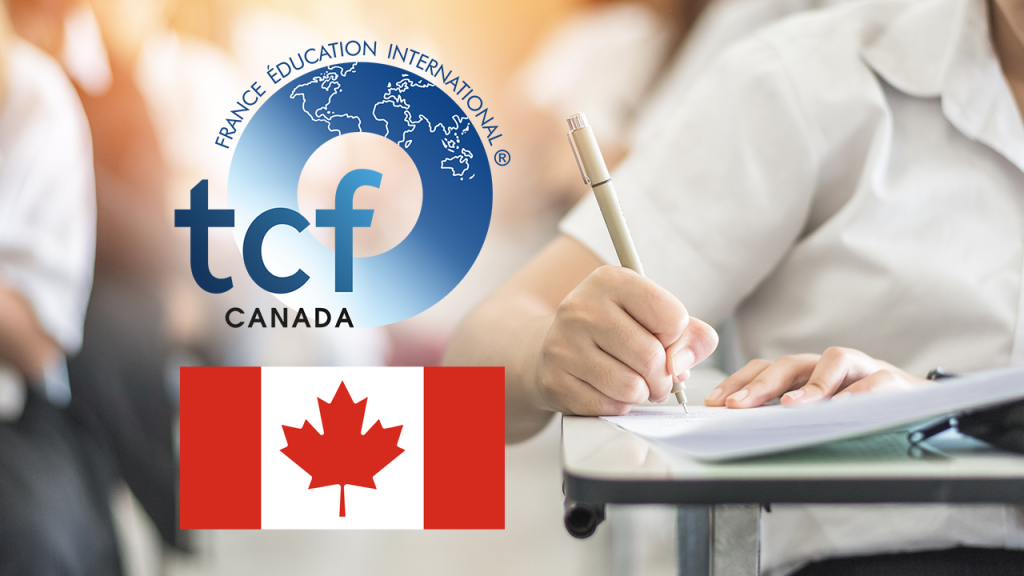TCF Canada
2025-03-26 2025-04-02 15:14TCF Canada
TCF CANADA
The TCF Canada is an official French language proficiency test approved by IRCC for immigration, citizenship, and professional or academic purposes in Canada
At CCC College, we offer TCF Canada exam preparation programs designed to take you from beginner to B2 proficiency efficiently. This page is your complete resource, covering everything you need to know about the TCF Canada test—all in one place
TCF Canada Exam Sessions
TCF Listening
25 minutes | 29 questions
Candidates must understand everyday conversations, radio announcements, and short interviews. Audio clips feature standard French with variations in speed and accent. Questions test comprehension of main ideas, details, and context. Scoring evaluates vocabulary recognition and the ability to follow natural speech.
B2 Target: Score ≥400-499
TCF Reading
45 minutes | 29 questions
Evaluates comprehension of various French texts including announcements, newspaper articles, and everyday documents. Questions test your ability to find key information, understand main ideas, and interpret context. The difficulty progresses throughout the test. Focuses on standard French used in professional and daily life situations.
B2 Target: Score 400-499
TCF Writing
60 minutes | 3 Tasks
Tests practical French writing skills through: 1) Completing a form, 2) Writing a descriptive message (60-120 words), and 3) Crafting an argumentative text (120-150 words). Tasks reflect everyday situations like emails or short articles. Evaluation focuses on clarity, grammar accuracy, vocabulary use, and ability to communicate effectively in French.
B2 Target: Score 400-499
TCF Speaking
15 minutes | 3 Tasks
Evaluates practical French speaking skills through: 1) An interview with simple questions, 2) A role-play conversation (e.g., requesting information), and 3) Expressing and defending an opinion. Tests everyday communication with focus on fluency, pronunciation, grammar accuracy, and vocabulary range. Standard French is expected, though minor accent variations are accepted.
B2 Target: Score 400-499
TCF CANADA Structure
The TCF Canada is an official French language test for permanent residency, evaluating your skills in four sections: listening, reading, writing, and speaking. Unlike some other exams, all four parts must be completed in one test session, with a total duration of about 2 hours and 45 minutes.
| Section | Duration | Number of Questions/Tasks | Format |
|---|---|---|---|
| Listening | 25 minutes | 29 multiple-choice questions | Computer-based |
| Reading | 45 minutes | 29 multiple-choice questions | Computer-based |
| Writing | 60 minutes | 3 writing tasks | Computer-based |
| Speaking | 15 minutes | 3 speaking tasks | Face-to-face with an examiner |
How TCF Canada Scores Impact Express Entry & Immigration
For Express Entry :
CLB 5 in English + CLB 7 (TEF Canada B2) in French grants 50 additional CRS points.
Receive invitations with lower CRS scores and higher invitation quotas through special French-language draws
For Provincial Nominee Programs (PNPs):
Scoring CLB 5 (TEF Canada B1) makes you eligible for Francophone-specific streams like Ontario’s French-Speaking Skilled Worker Program.
Learn French for Francophone Community Pilot:
With a score as low as CLB 5 in French (TEF Canada), you can apply through Francophone community Pilot programs—one of the most accessible pathways to Canadian permanent residence.
TCF CANADA Exam Score Chart
| CLB Level | Reading | Writing | Listening | Speaking |
|---|---|---|---|---|
| 10 | 549-699 | 549-699 | 549-699 | 549-699 |
| 9 | 523-548 | 523-548 | 523-548 | 523-548 |
| 8 | 503-522 | 503-522 | 503-522 | 503-522 |
| 7 | 458-502 | 458-502 | 458-502 | 458-502 |
| 6 | 406-457 | 406-457 | 406-457 | 406-457 |
| 5 | 375-405 | 375-405 | 375-405 | 375-405 |
| 4 | 342-374 | 342-374 | 342-374 | 342-374 |
| TCF Canada Score | CEFR Level | CLB Level | Express Entry CRS Points |
|---|---|---|---|
| 0 – 199 | A1 Not Achieved | Below CLB 4 | Not eligible for points |
| 200 – 299 | A1 | CLB 4 | 6 points |
| 300 – 349 | A2 | CLB 5 | 12 points |
| 350 – 449 | B1 | CLB 6 | 25 points |
| 450 – 549 | B2 | CLB 7 | 50 points |
| 550 – 649 | C1 | CLB 9 | Maximum points awarded |
| 650 – 699 | C2 | CLB 10+ | Maximum points awarded |
TCF Canada Understanding French Language Proficiency Levels (A1 to B2)
A1 – Beginner Level
At A1 level, you can:
- Understand and use familiar and everyday expressions and very simple statements that
- are intended to meet concrete needs
- Knowing how to introduce yourself or someone
- Being able to ask and answer questions about a person
- Communicate simply if the caller speaks slowly and clearly and is cooperative
A2 – Elementary Level
At A2 level, you can:
- Understand single phrases and frequently used expressions in relation to areas of the
- everyday environment (e.g. simple personal and family information, shopping, work)
- Ability to communicate in simple and routine tasks requiring only a simple and direct
- exchange of information on familiar and routine subjects
- Describe with simple means his training, his immediate environment and talk about
- subjects that correspond to immediate needs
B1 – Low-Intermediate Level
At B1 level, you can:
- Understand the essential points of a discussion when clear and standard language is used and if it is familiar things at work, school, leisure, etc.
- Be autonomous in most situations encountered while traveling in an area where the target language is spoken
- To be able to produce a simple and coherent discourse on familiar subjects and in its fields of interest
- The ability to tell a story, an experience or a dream, describe a hope or a goal, and briefly explain the reasons or reasons for a project or idea
B2 – Upper-Intermediate Level
At B2 level, you can:
- Understand the essential content of concrete or abstract subjects in a complex text, including technical discussion in its specialty
- Communicating spontaneously and easily with a native speaker
- Express a clear and detailed opinion on a wide range of topics, express an opinion on a topical issue and set out the advantages and disadvantages of different possibilities




